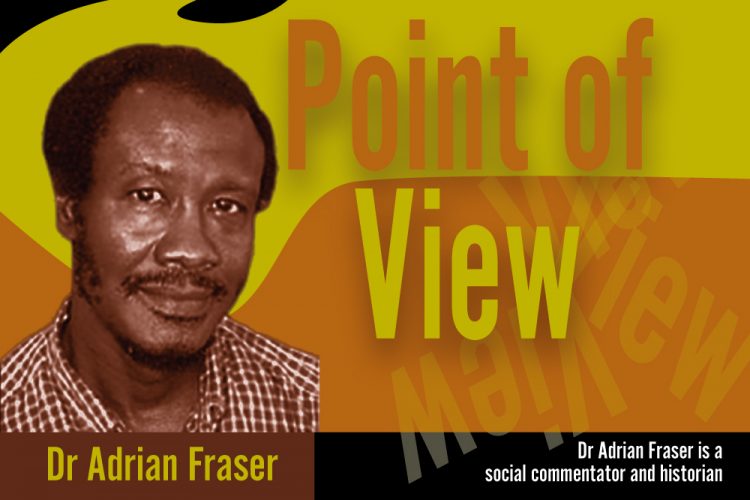The people who remained – The Vincentian indigenous community

The SVG UWI Open Campus, last Tuesday and Wednesday held its Country Conference on the theme “Ancestry and Heritage- The Vincentian Identity
and Heritage: From whence we came.”
Very interesting and informative information was shared based on the research interests of those who presented papers. The paper I presented was on the indigenous people who remained after the mass banishment to Ruattan off Honduras in 1797. My presentation was part of a panel on “The Indigenous People- Their Continuing Story Amidst Eurocentrism and Colonialism.”
Although most of, if not all of the panels touched on matters relevant to the indigenous people, Dr Rose-Ann Smith’s “Response and Resilience following the 2021 La Soufriere Eruption, Land Identity, Environmental Justice, and the Indigenous People of St. Vincent and the Grenadines” was of current interest since it dealt with matters related to the nation’s response to the recent volcanic eruption and its impact on the indigenous people.
At a conference at the University of Miami in 2000 Peter Hulme, a scholar then at the University of Essex, made the point that in the period 1795-1796 St. Vincent was at the centre of the world because of “ . . . the Anglo-French Wars, the indigenous peoples’ struggles against the Europeans, race and slavery (which) came together in 1795”. He then went on to note that at the time of his presentation, 2000, St. Vincent had become a Caribbean Island to which few people paid much attention.”
With the banishment of a majority of the indigenous people in 1797, all attention focused on Central America, with historians, ethno-historians, linguists and anthropologists trying to capture their movement. The situation was different in St. Vincent. Until recently, few persons outside of St. Vincent and the Grenadines, including scholars, knew that there were descendants of indigenous people living here.
I can only recall the work of two scholars paying any attention to, “the people who remained,” as I called them. CJM Gullick’s 1985 publication MYTHS OF A MINORITY, based on research carried out in the 1970s, examined the “Caribs” recollections of the past and compared them with what he considered historical reality. In 2007 Paul Twinn in his thesis for the Anthropology Department of the University College, London, argued that contrary to what has been said about the indigenous people being on the verge of extinction, their position had changed fundamentally since independence.
In the period after 1797, what stands out as major themes and challenges for the indigenous people were issues of land use and identity, land being critical to their identity and ways of life, relating to all aspects of their lives and providing the means of defining who they were and ways in which they survive.
These of course must be seen within the context of colonialism. Columbus had named and defined the Kalinagos. He called them “Carib”, a word he claimed to have gotten from the Tainos of the Greater Antilles. The word “Carib” had connotations of cannibalism and savagery. This might not have bothered the indigenous people before 1797. They controlled their land and their lives and knew who they were.
With the mass exodus of indigenous people, the government took over their lands and parcelled them into eight estates which they then sold. By a treaty of 1805, 230 acres were given at Morne Ronde to persons who had surrendered. The authorities were never sure how many had remained in SVG because most had disappeared into the interior setting up small settlements. Some in the North Windward area were allowed to occupy lands provided they worked for the proprietors – taking sugar in their boats to the ships that remained anchored out there.
With the loss of their land that defined who they were, they were then subjected to an education system where the history they were taught drove home the point of cannibalism. This was also a sort of divide and rule situation since it affected how non-indigenous people saw them. This is something that the Vincentian community seems afraid to talk about, but Paul Twinn ran head into it when he was doing his research in the North Windward area in the years between 1999 and 2000. When he told a lady in North Central that he was doing research on the history of SVG and was looking at the “Caribs”, her “draw dropped, and her eyes widened- why do you want to go up there with them people. Them “Caribs” are crazy. They get drunk all the time. Well, I know you are an educated man Mr Twinn, but you don’t know whey you doing. Them people aren’t like us.”
What startled him was that she was a teacher. He got similar responses from other persons. Others wanting to dissuade him from going to stay in Sandy Bay, “described the proclivity of the “Caribs” to get drunk and / or fight. Given my position as a white Englishman from the University of London, my determination to do so tended to evoke a mixture of puzzlement and mild amusement. Occasionally the response would be a knowing nudge and wink- Dere’s plenty of gangs up there and dose Carib gals are plenty hot white man. You gonna have some good time.” Let us remind ourselves that this is the year 2,000!
Dr Adrian Fraser is a social commentator and historian









